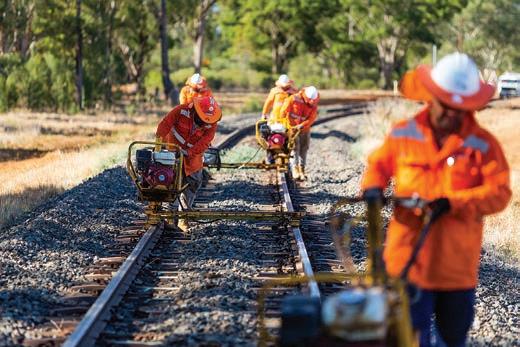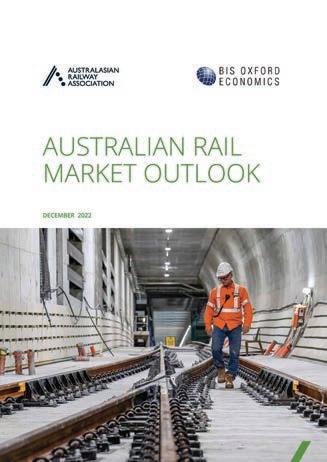
1 minute read
Rail projects average $14.4 billion per year
A new BIS Oxford Economics report released by the ARA has found that rail construction and maintenance activity will rise to $14.4 billion per year over the next five years, increasing from a record year that saw $12.9 billion in rail civil construction and maintenance activity in 2021-22.

Addressing the opening day of the Ausrail 2022 Conference in Brisbane, ARA chair Danny Broad said the Australian Rail Market Outlook report confirmed the sector was growing, with $129b in rail construction and maintenance forecast in the 10 years to 2031-32, compared to $96b over the previous decade.
Over the next 15 years, $154b in rail construction work is expected as the wave of new projects continues to meet the country’s future transport needs.
“The report confirms Australia is embarking on a period of railway construction that will transform the rail network for generations to come,” he said.
“The strong pipeline of rail projects recognises the essential role rail will continue to play as part of our public transport networks and freight operations.
“In the short to medium term, these projects will help meet Australia’s transport needs and enable our sustainable growth. Longer term, these projects will support our rising population and help achieve the country’s net-zero targets, by taking more cars and trucks off the road and encouraging greater use of sustainable transport options.”
In 2021-22, there was $10.73b in rail civil construction activity – surpassing 2018 forecasts for the period – and $2.13b in maintenance activity.
Rail construction work increased by 2.9 per cent in real terms in 2021-22, representing the sixth consecutive year of growth in rail construction.
The report found publicly funded major projects across NSW, Victoria and Queensland would account for 77 per cent of major project work in 2023-24, with key projects such as the Sydney Metro, Inland Rail and Melbourne Airport Rail driving growth over the medium term. WA rail activity will be boosted over the next two years as the WA Government’s METRONET program ramps up, while activity in the Australian Capital Territory will increase in 2023-24 due to the Canberra Light Rail Stage 2 development.
“With so many significant construction and maintenance projects occurring or planned across the country, policy changes that improve outcomes for both government and industry could have a huge impact on the value we derive from this period of investment,” Broad said.
“The right reforms could save money, improve efficiency and create the opportunity for innovation to flourish.”










